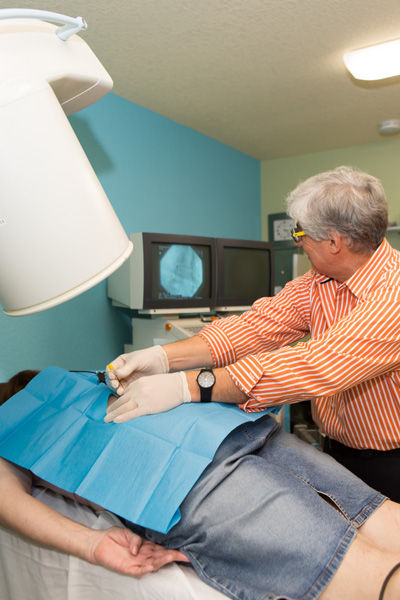About 100 million Americans suffer from chronic pain; the term refers to the length of time the pain persists, generally defined as six months or longer. Chronic pain is not necessarily severe, and not necessarily constant.
To fight pain, our bodies produce natural painkillers. The term “endorphin” has made its way into our vocabulary; most of us associate it with a feeling of well-being, and with good reason. Endorphins are neurotransmitters that interact with receptors in our brain to reduce our perception of pain and increase positive feelings. They act similarly to drugs such as codeine and morphine, but with no danger of addiction or dependence.
Now, in a piece of good news for chronic pain sufferers, a just-published study from the University of Manchester in the United Kingdom shows for the first time that the number of these brain receptors increases to help cope with persistent pain.
Dr. Majid Khalaf, an anesthesiologist who practice interventional procedures in Vero Beach, says that the study makes sense. “It’s the same way opioid drugs work – by increasing the number of receptors.”
Although the test subjects were arthritis sufferers, the results are thought to be relevant for all types of chronic pain.
Professor Anthony Jones, the director of the Manchester Pain consortium, says of the study, “This is very exciting because it changes the way we think about chronic pain. There is generally a rather negative and fatalistic view of chronic pain, [but] the study shows . . . the whole pain system is very flexible.”
Lead researcher, Dr. Christopher Brown, says, “Although the mechanisms of these adaptive changes are unknown, if we can understand how we can enhance them, we may find ways of naturally increasing resilience to pain without the side effects associated with many pain-killing drugs.”
Dr. Khalaf agrees, and says natural solutions already exist and are always an option. He mentioned the plant turmeric, the main spice in curry dishes. It has health benefits when eaten and when taken in supplement form; it is most typically used as an anti-inflammatory, and as such can help relieve discomfort.
Chronic pain may originate with an initial trauma, such as an injury or infection. Or there may be an ongoing source of pain; this is the case with arthritis sufferers. Some people suffer chronic pain in the absence of any past injury or evidence of body damage.
Whatever the cause, chronic pain seldom exists in a vacuum; it can take both a physical and emotional toll in the form of fatigue, sleeplessness, a weakened immune system, depression, anxiety and stress.
Vero’s Dr. Khalaf says learning all he can about his patient’s discomfort is essential to creating an effective treatment plan. “I ask them where the discomfort is, and what type of sensation it is. Is it sharp, dull, stabbing, burning? Does it radiate, which indicates nerve damage? Was there some trauma that caused it?” Dr. Khalaf also takes a full health history, including what medications the patient has taken and what other treatments they may have received.
After gathering all of that information and performing a physical exam, Dr. Khalaf will then craft a treatment plan designed to treat the underlying cause of the problem. Medication may be necessary to help the patient cope, but it is often just a camouflage. The root cause of the discomfort can be treated with interventional procedures and physical therapy.
Acupuncture, local electrical stimulation, relaxation and meditation, and behavior modification are other options for chronic pain that have been used successfully.
With chronic pain affecting so many people, it’s no surprise that research is both ongoing and intense. Clinical investigators have found that chronic pain sufferers often have lower-than-normal levels of endorphins in their spinal fluid, and some researchers believe that electro-acupuncture – the electrical stimulation of nerve endings – will activate the endorphin system, increasing those levels.
Researchers are also studying drugs not normally prescribed for pain, to see if they could have some effectiveness in providing relief.
Dr. Khalaf treats patients at the Spine & Joint Treatment Center, which is located at 1936 32nd Ave. in Vero Beach. The phone number is 772-778-8882.

